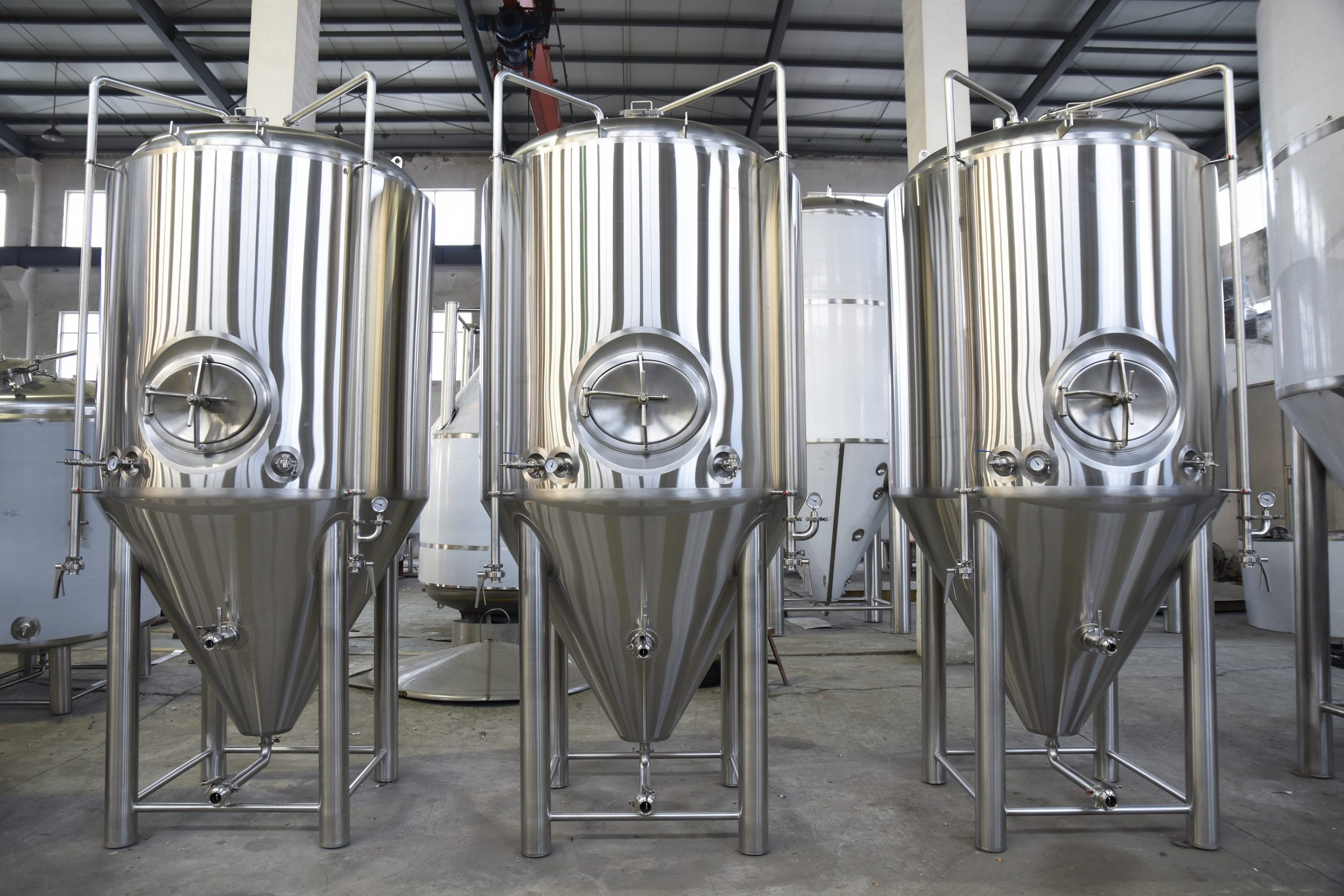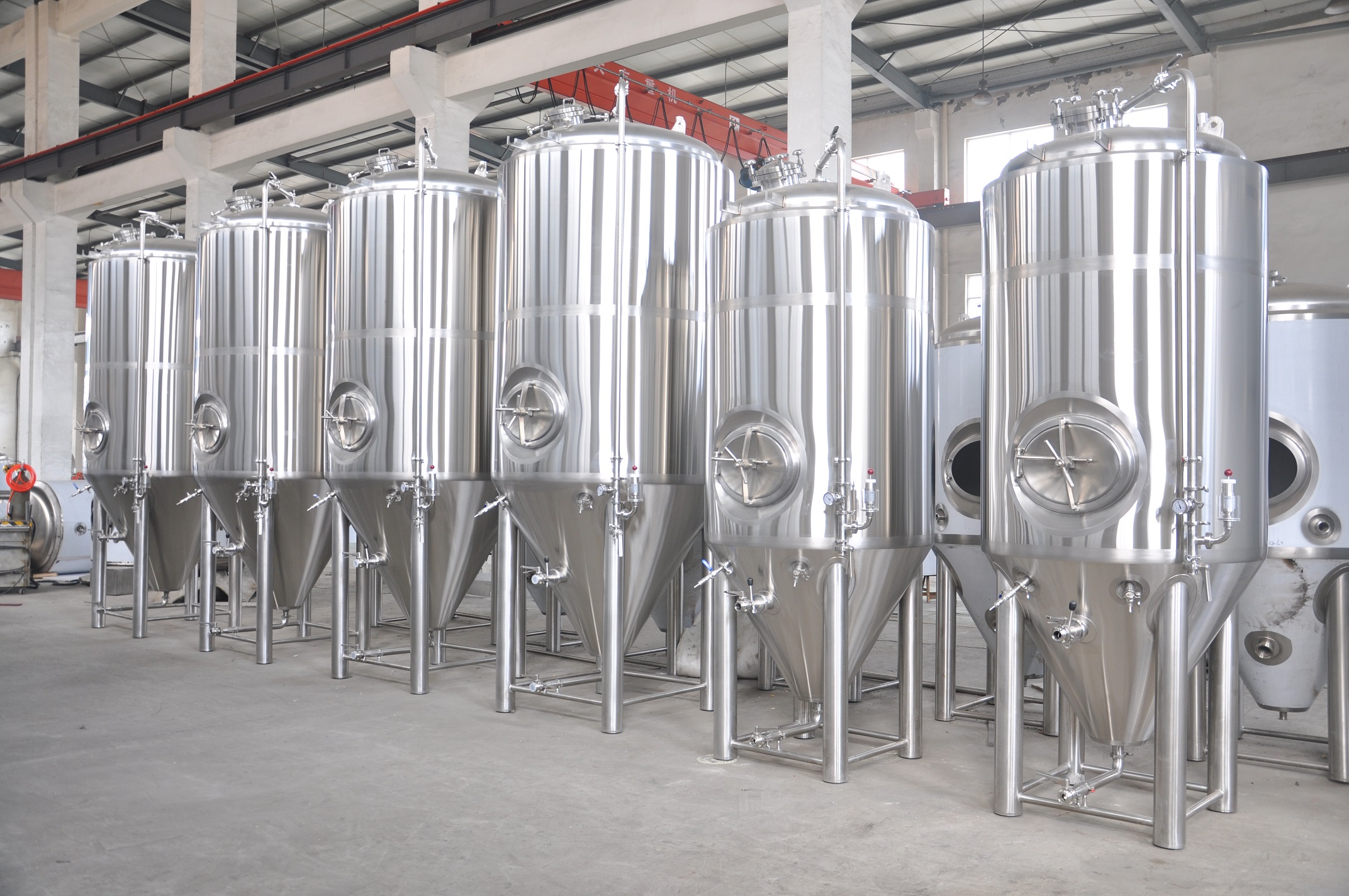
Designing NFE Brewing Equipment: Beer Fermentation Vessels

Designing beer fermentation vessels for a craft brewery is an essential aspect of the brewing process. These vessels need to provide an environment that allows yeast to ferment the wort into beer while maintaining temperature, pressure, and cleanliness. Here’s a step-by-step guide to designing NFE (NFE Machinery Co., Ltd) brewing equipment for beer fermentation vessels:
1.Understand Brewery Needs:
Begin by understanding the specific requirements of your brewery, such as the batch size, types of beer you plan to brew, and space constraints. These factors will influence the size and design of your fermentation vessels.
2.Choose Material:
Select a material for the fermentation vessel that is suitable for the brewing process. Common choices include stainless steel, which is durable, corrosion-resistant, and easy to clean. Ensure that the material is non-reactive and food-safe even if you’re designing NFE equipment.
3.Vessel Design:
Design the vessel with the following considerations in mind:
- Shape and Size: The shape can vary, but cylindrical vessels are common as they allow for easy cleaning and yeast sedimentation. The size should match your batch volume requirements.
- Jacketing: Consider whether you need a jacketed vessel for temperature control. Jacketed vessels have space for temperature-regulating fluids to maintain fermentation temperatures.
- Pressure Rating: Ensure the vessel can handle the pressure generated during fermentation. This is especially important for fermenting high-alcohol or carbonated beers.
- Access Ports: Include ports for adding ingredients, monitoring temperature, and taking samples. These should be sealed to prevent contamination.
4.Temperature Control:
If your brewery requires precise temperature control, integrate a temperature control system. This might include glycol jacketing or heating elements. Ensure the vessel’s design accommodates these components.
5.Sanitary Design:
Even though you’re designing NFE equipment, maintain a sanitary design to prevent contamination. This includes smooth, easy-to-clean surfaces, sanitary welds, and seals to prevent ingress of outside contaminants.
6.Safety Features:
Incorporate safety features like pressure relief valves and pressure gauges to ensure the vessel doesn’t over-pressurize during fermentation.
7.Cleaning and Drainage:
Design the vessel with clean-in-place (CIP) capabilities. Ensure it has proper drainage to remove yeast and other residues after fermentation.
8.Manways and Access Points:
Include large, easy-to-access manways for cleaning and maintenance. These should be sealed tightly to prevent contamination.
9.Fittings and Ports:
Install ports and fittings at strategic points for the addition of ingredients, sampling, and monitoring. These should be compatible with industry-standard sizes.
10.Testing and Quality Control:
Before putting the vessel into operation, thoroughly test it for leaks, pressure control, and temperature stability. Ensure it meets industry standards for safety and quality.
11.Documentation:
Maintain detailed documentation of the vessel’s design, construction, and maintenance. This will be valuable for future reference and regulatory compliance.
12.Regulatory Compliance:
Ensure that your vessel design complies with local, state, and federal regulations related to brewing equipment, even if it’s designated as NFE. Compliance ensures safety and quality standards are met.
13.Maintenance Plan:
Develop a regular maintenance plan to keep your fermentation vessels in top condition. Regular inspections and cleaning are crucial for consistent beer quality.
14.Scaling Up:
Consider future growth and scalability. Design your fermentation vessels to accommodate increased production capacity if needed.
15.Cost Considerations:
Keep in mind the budget for your brewery. While quality is essential, cost-effective solutions can be found without compromising on safety and quality.
Designing beer fermentation vessels requires a balance between functionality, safety, and cost. Collaborating with experienced equipment manufacturers or consultants can be beneficial in ensuring the success of your brewing operation.



















